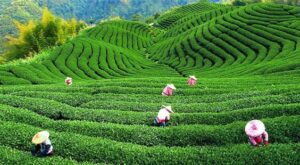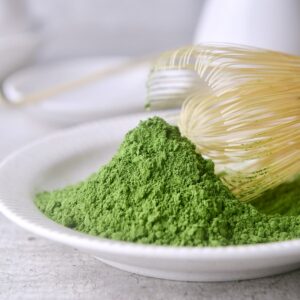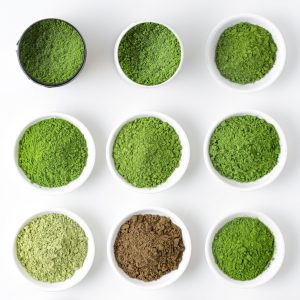
The journey of green tea traces back to Emperor Shen Nong in China, who serendipitously discovered tea when leaves fell into his boiling water, resulting in a refreshing beverage. Over time, tea cultivation in China evolved, incorporating spices and flowers to enhance its aroma and flavor. At that time, all tea produced in China was green tea, and its processing involved steaming and drying the leaves. However, this method often led to the loss of flavor and aroma. To improve preservation, production techniques were refined to include fermentation and baking, giving rise to oolong and black teas.
In the early Kamakura period, Zen Buddhist monks introduced tea to Japan, bringing along the knowledge of tea production. This process prominently featured the use of a stone mortar, known as “Ishi-usu” (石臼: Ishi-usu). This traditional mortar consists of two cylindrical stones, one placed atop the other, with a handle for rotation. Grinding tea leaves in an Ishi-usu generates minimal heat, effectively preserving their unique flavor and aroma, resulting in a fine powder known as matcha. Notably, even with continuous grinding for one hour, only about 40 grams of matcha powder can be produced, contributing to its higher cost compared to standard tea leaves.
While this stone grinding technique has largely fallen out of favor in China, it has remained a staple in Japan since the 12th century, where matcha became integral to Zen Buddhist rituals. Subsequently, it gained popularity among the upper echelons of feudal Japanese society, and today, its appreciation has transcended borders, spreading globally.
The primary distinction between matcha and green tea lies in their forms and uses. Matcha is a fine powder, while green tea is typically available as dried leaves. When preparing green tea, hot water is poured over the leaves, which are then filtered out before consumption. In contrast, matcha is whisked with hot water, allowing the entire tea powder to be consumed without straining.
A common adage states, “Matcha must be powdered green tea, but not all powdered green tea is matcha.” This distinction arises because the finest matcha is typically ground from high-quality Tencha leaves, which yield a finer consistency than other tea varieties.
As the popularity of matcha has surged, price reductions have led to some green tea powders on the market being mixed with flour, undermining the authenticity of what should be 100% pure matcha. A comparison of various brands often reveals noticeable differences in particle fineness and color.
Currently, matcha is widely utilized in hot and cold beverages, desserts, and ice cream, celebrated for its vibrant green hue and nutritional benefits derived from the whole tea leaves. This versatility has made matcha particularly appealing to health-conscious consumers. In contrast, while green tea is suitable for various drinks, it is less ideal for dessert applications.




